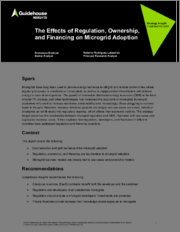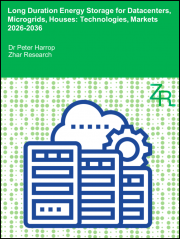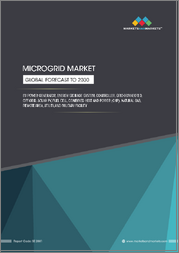
|
시장보고서
상품코드
1640747
마이크로그리드 도입에 있어 규제, 소유권 및 금융의 효과The Effects of Regulation, Ownership, and Financing on Microgrid Adoption |
||||||
마이크로그리드는 일반 전력망에 대한 접근이 불안정하거나 존재하지 않는 오프그리드 및 외딴 지역의 커뮤니티에 에너지 복원력을 제공하고, 비상사태에 대비하여 중요한 인프라에 안정적인 에너지를 공급하기 위해 오랫동안 활용되어 왔습니다.
태양광발전, 축전 등 재생 가능한 분산형 에너지 자원(DER)의 증가로 인해 내재해성 및 지속가능성을 높이고자 하는 온그리드 고객과 최근 부하의 계통연계에 어려움을 겪고 있는 고객을 위해 마이크로그리드의 인기가 높아지고 있습니다.
그러나 개별 프로젝트가 독특하고 사용 사례도 참신하기 때문에 개별 마이크로그리드는 규제 체계에 잘 맞지 않아 경제적 타당성에 영향을 미치고 있습니다.
본 보고서에서는 마이크로그리드 규제와 DER의 관계를 사용 사례와 적용 가능한 비즈니스 사례를 제시하면서 전략적 인사이트으로 살펴봅니다. 그리고 각국의 규제 당국, 개발자, 금융기관이 규제와 자금 조달 문제를 어떻게 해결해왔는지 살펴봅니다.
목차
개요
- 비용 절감과 그리드 복원력이 마이크로그리드 도입을 촉진합니다.
- 규제, 소유권, 자금조달이 마이크로그리드 도입의 큰 장벽으로 작용하고 있습니다.
- 마이크로그리드의 비즈니스 모델은 사용 사례 및 소유권 모델과 밀접한 관련이 있습니다.
권장사항
- 에너지 서비스(EaaS) 계약은 개발자와 고객 모두에게 이익이 됩니다.
- 규제 당국과 개발자는 마이크로그리드를 표준화해야 합니다.
- 규제 당국은 마이크로그리드 개발자의 투자가 보호받을 수 있도록 해야 합니다.
- 민간 금융기관은 마이크로그리드에 대한 지식과 관심을 높여야 합니다.
Microgrids have long been used to provide energy resilience to off-grid and remote communities where regular grid access is unreliable or nonexistent, as well as to supply critical infrastructure with reliable energy in case of emergencies.
The growth of renewable distributed energy resources (DER) in the form of solar PV, storage, and other technologies has increased the popularity of microgrids for on-grid customers who want to increase resilience, sustainability and, increasingly, those struggling to connect loads to the grid.
However, because individual projects are unique and use cases are novel, individual microgrids do not fit neatly into regulatory regimes, which affects their economic viability.
This strategy insight examines the relationship between microgrid regulation and DER, illustrated with use cases and applicable business cases. It then explores how regulators, developers, and financiers in different countries have addressed regulatory and financing questions.
Table of Contents
Context
This report covers the following:
- Cost reduction and grid resilience drive microgrid adoption
- Regulation, ownership, and financing are key barriers to microgrid adoption
- Microgrid business models are closely tied to use cases and ownership models
Recommendations
Guidehouse Insights recommends the following:
- Energy as a service (EaaS) contracts benefit both the developer and the customer
- Regulators and developers must standardize microgrids
- Regulators should ensure a microgrid developers' investments are protected
- Private financiers should increase their knowledge of and exposure to microgrids



















